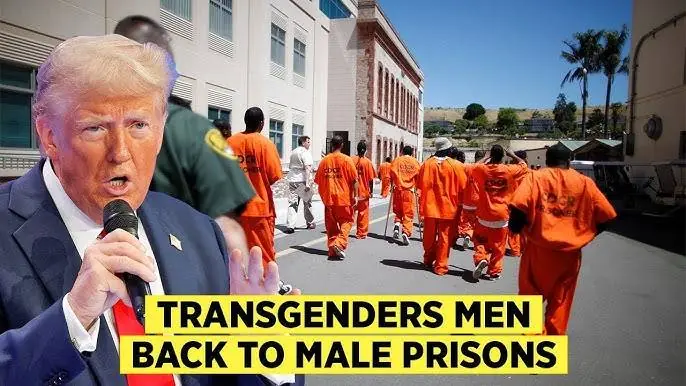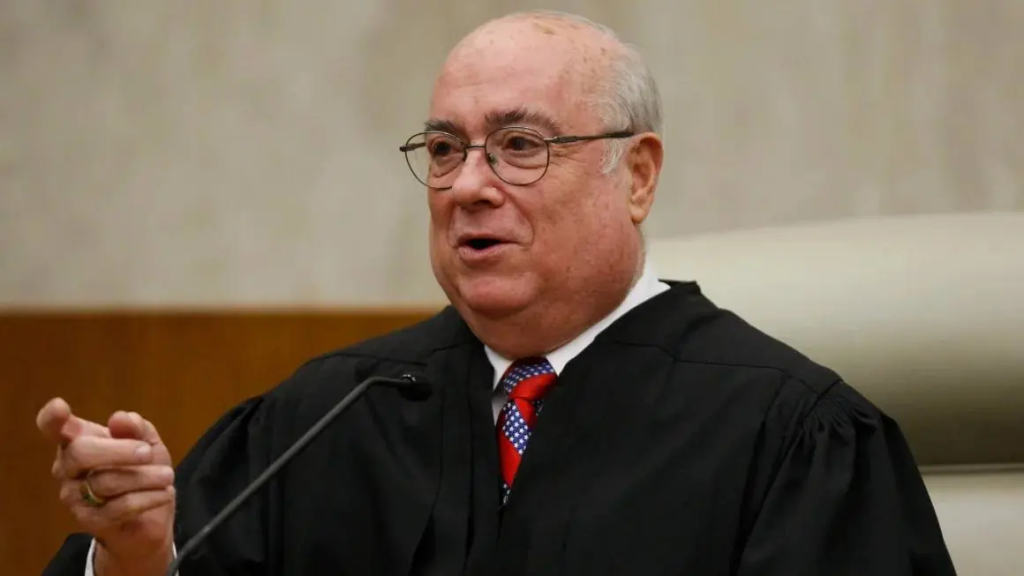A federal judge has issued a ruling that temporarily blocks the enforcement of a Trump administration policy requiring incarcerated transgender women to be housed in men’s prisons. This decision represents a significant legal challenge to one of the administration’s controversial executive orders regarding the treatment of transgender individuals in federal facilities.
The ruling comes as three transgender women, currently housed in women’s federal prisons, sued the government, arguing that the policy exposes them to serious risks, including physical and sexual violence. The decision underscores the ongoing legal battles surrounding transgender rights in the U.S. and raises important questions about the constitutional protections of incarcerated individuals.
The Executive Order That Sparked the Legal Battle

On his first day in office, President Donald Trump signed an executive order that included new policies affecting transgender inmates. The order mandated that all transgender women in federal custody be housed in men’s prisons, aligning their placement with their assigned sex at birth rather than their gender identity.
Additionally, the executive order prohibited the Bureau of Prisons from providing gender-affirming care to transgender inmates, which includes hormone therapy and other medical treatments. These changes reversed Obama-era policies that allowed for more individualized assessments of housing assignments based on safety considerations and gender identity.
Why Transgender Inmates Challenged the Policy
Three transgender women currently held in federal women’s prisons filed a lawsuit challenging the policy. Their attorneys argued that the order amounted to unconstitutional sex-based discrimination and violated their Eighth Amendment rights, which protect against cruel and unusual punishment.
According to their legal team, moving them to men’s prisons would expose them to a significantly higher risk of violence and sexual assault. Multiple studies and government reports have highlighted that transgender inmates face disproportionate levels of abuse when housed in facilities that do not align with their gender identity.
Jennifer Levi, an attorney representing the plaintiffs, argued before the court that the executive order places her clients in immediate danger, making the case for urgent judicial intervention.
The Judge’s Ruling and Its Implications
In an 11-page ruling, U.S. District Judge Royce Lamberth granted the plaintiffs’ request for a temporary restraining order. The ruling prohibits prison officials from transferring the three transgender women to men’s facilities while the lawsuit continues.
Lamberth acknowledged that transgender inmates are at an elevated risk of harm when housed according to their assigned sex at birth rather than their gender identity. He noted that the government did not dispute that transgender prisoners face greater physical and sexual violence in men’s prisons.
With this ruling, the judge ordered that the plaintiffs’ housing arrangements and access to medical care remain unchanged until further legal proceedings take place. This means that, for now, they will continue to receive gender-affirming care and remain in women’s facilities.
The Broader Impact on Transgender Rights in Prisons
This case is not just about three individuals—it has broader implications for the rights of transgender people in the U.S. prison system.
- Higher rates of violence – Studies show that transgender inmates housed in men’s prisons are ten times more likely to experience sexual assault than other inmates. The decision to block their transfer recognizes these risks and reinforces legal protections against cruel and unusual punishment.
- Medical rights at stake – The Trump administration’s ban on gender-affirming care for incarcerated trans individuals is also being challenged in court. Advocates argue that denying necessary medical treatment violates constitutional protections against discrimination.
- Legal precedent – If the courts ultimately rule against the Trump administration’s policy, it could set a precedent for future cases related to transgender rights in prisons, reinforcing protections for incarcerated LGBTQ+ individuals.
Reaction to the Judge’s Decision

The ruling has drawn mixed reactions from different political and advocacy groups.
- LGBTQ+ rights organizations have praised the decision, calling it a major step in protecting vulnerable inmates. Many advocates argue that forcing trans women into men’s prisons disregards basic human rights and exposes them to serious, preventable harm.
- Conservative legal groups, however, have criticized the ruling, maintaining that prison policies should align with an individual’s biological sex, citing concerns about security and fairness within correctional facilities.
- Prison reform advocates highlight that this case goes beyond just transgender rights and touches on broader issues of inmate safety and humane treatment within the U.S. prison system.
What Happens Next?
The temporary restraining order does not represent a final ruling on the case. The judge’s decision merely ensures that the plaintiffs remain in women’s facilities while the lawsuit proceeds through the courts.
In the coming months, there will be further legal arguments over:
- Whether the executive order violates constitutional protections
- The long-term implications for housing transgender inmates
- The legality of denying gender-affirming care in federal prisons
If the courts ultimately rule against the policy, it could lead to permanent changes in how transgender prisoners are housed and treated in federal facilities. However, if the Trump administration wins the case, it could solidify its stance on restricting transgender rights in prisons.
Conclusion: A Landmark Case for Transgender Rights

The decision by Judge Royce Lamberth to block the transfer of transgender women to men’s prisons marks a significant legal moment in the ongoing fight for LGBTQ+ rights in the U.S. correctional system. By recognizing the increased risk of violence and harm faced by transgender inmates, the ruling prioritizes human rights and safety over political policy changes.
As the lawsuit moves forward, this case could reshape federal prison policies and influence how transgender individuals are treated behind bars. It also raises broader questions about the role of the justice system in protecting vulnerable populations, ensuring that constitutional protections apply to all—regardless of gender identity.
This is a critical battle in the larger movement for transgender rights, and its outcome could set a legal precedent for years to come


